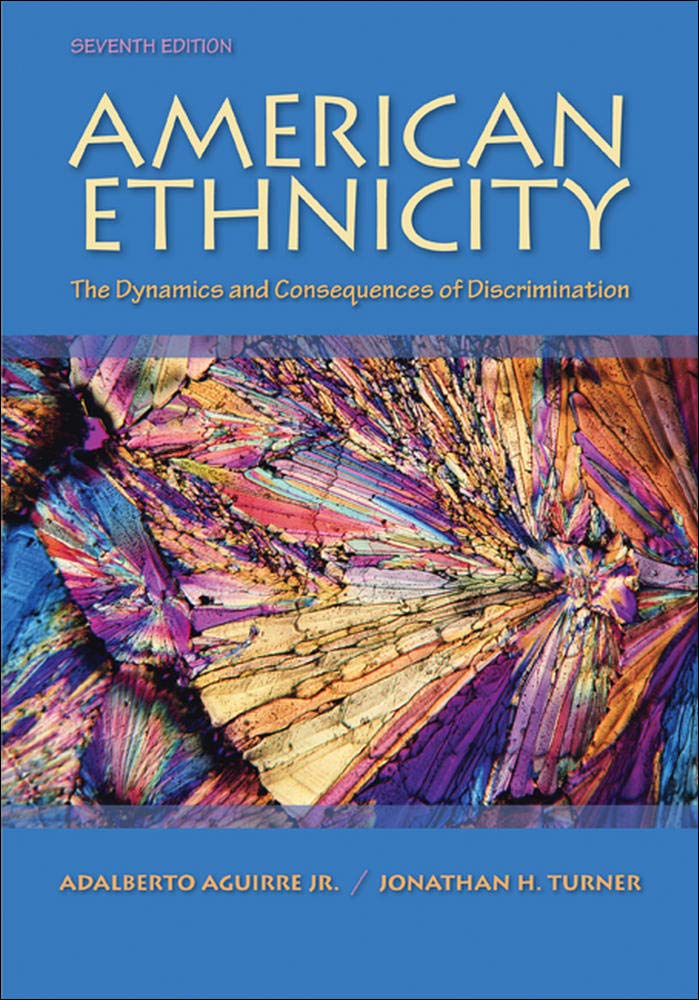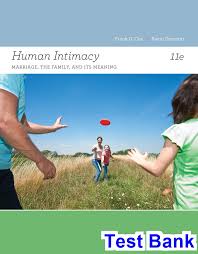Description
Test Bank For American Ethnicity The Dynamics and Consequences of Discrimination 7Th Edition By Adalberto
Chapter 03 The Anglo-Saxon Core and Ethnic Antagonism
Essay Questions
1. How did the Anglo-Saxon core become dominant?
Answers will vary
2. Explain the elements of ascetic Protestantism.
Answers will vary
3. Explain the French contribution to the legal tenets of the Anglo-Saxon core.
Answers will vary
4. Explain how capitalism fosters the use of less expensive ethnic labor.
Answers will vary
True / False Questions
5. Relations among ethnic groups only rarely involve relations of superordination and subordination.
FALSE
6. The English settlers who came to America were a “pure” stock that had not been blended with other European ethnic stocks.
FALSE
7. The English settlers dominated numerically for the first two centuries after the initial colonists had settled.
TRUE
8. Unlike today, early settlers in America did not demand that immigrants speak English.
FALSE
9. Much like today, the early colonists in America were worried about the erosion of the Anglo-Saxon core.
TRUE
10. The French provided the substance to American law; the English, the broad philosophical tenets.
FALSE
11. American law represents a blending of French and English legal traditions.
TRUE
12. After the Revolution freed the colonies from the English Crown, the dynamic capitalism that emerged depended upon inexpensive and subordinated ethnic labor.
TRUE
13. There was always a disjuncture in early America between constitutional principles and actual practices in local communities.
TRUE
14. Public schooling was an essential part of America from the very beginning.
FALSE
15. The early public schools in America were created in order to “Americanize” ethnic immigrants.
TRUE
16. Early private schools in America became the model for the creation of public schools.
TRUE
17. Public schools emerged in America primarily for economic reasons rather than as vehicles for “Americanizing” immigrants.
FALSE
18. The emergence of private Catholic schools counteracted the dominance of northern European values and beliefs.
FALSE
19. From the beginning, there was religious tolerance in America.
FALSE
20. English traditions constrained how all religions were practiced.
TRUE
21. Religious tolerance was not so much an ideal that early American settlers pursued as a necessity in order to reduce the conflict.
TRUE
22. It can be said that the American economy in its early years ran on sources of inexpensive labor.
TRUE
23. Even today, with two-hundred years of immigration, the descendants of the Anglo-Saxon core hold elite positions in disproportionate numbers.
TRUE
24. Those that have assimilated into the Anglo-Saxon core have done better economically than those who have not.
TRUE
25. Abolitionist pressures to free slaves created a sense of threat in both the South and North.
TRUE
26. The Anglo-Saxon core has remained impervious to other cultures.
FALSE
27. In the 17th and 18th centuries, Africans were enslaved and Native Americans conquered because their freedom posed a threat to the Anglo-Saxon core.
TRUE
28. White ethnic populations that adopted the Anglo-Saxon core did not fare any better than either African Americans, Native Americans, or Mexican Americans.
FALSE
29. The disproportionate representation of Anglo-Saxon descendants in elite positions has served to reinforce Anglo-Saxon beliefs, cultural climate, and institutional policies in American society.
TRUE
30. The establishment of Anglo-Saxon culture and institutional structures in America did not force other cultures and institutional systems to adopt Anglo-Saxon ways.
FALSE
31. English settlers were able to dominate Native Americans because they arrived in America with more developed institutional structures.
TRUE
32. Tolerance for non-Protestants in America was not high, but not lower than the tolerance of various Protestant churches toward each other.
FALSE
33. English religious traditions dictated how the religious traditions of non-English Protestants and non-Protestants were to be tolerated in post-Revolutionary America.
TRUE
34. The schools established after the Revolution incorporated into the curriculum the social and cultural realities of non-European immigrants.
FALSE
35. The system of private schools that existed before the American Revolution was a basis for promoting the “Americanization” of immigrants in the 19th and 20th centuries.
TRUE
36. The post-Revolutionary establishment of a constitutional democracy in America eliminated the discriminatory treatment of ethnic populations.
FALSE
37. The economic development and exploitation of land and natural resources in America increased the prosperity of England.
TRUE
38. The dominant systems of symbols in America—language, values, and laws—trace their roots to the early German settlers.
FALSE
39. The number and variety of languages brought to America by European immigrants transformed society into a bilingual environment.
FALSE
40. Despite the European origin of early immigrants, English became the language for identifying a person as an “American.”
TRUE
41. In the United States, Anglo-Saxon culture and institutions dictate what other ethnic populations must become.
TRUE
42. The U.S. Census Bureau estimates that non-Hispanic whites will be a minority by the year 2045.
FALSE
43. Because of their distinctive and different cultural traditions, it was difficult for Germans to adapt to English culture and institutions.
FALSE
Multiple Choice Questions
44. Which is not a part of the “ethnic complex” comprising the Anglo-Saxon core?
A. white skin
B. northern European stock
C. Protestant religion
D. English cultural traditions
45. Which is not a Protestant-inspired value?
A. individualism
B. hard work
C. material success
D. collectivism
46. Which ethnic population from the British Isles was the smallest before 1800?
A. English
B. Scots
C. Welsh
D. Irish
47. At the close of the 18th century, what percentage of the American population was British Isle in origin?
A. around 40 percent
B. almost 80 percent
C. around 60 percent
D. more than 90 percent
48. Which was the largest non-British Isle ethnic population before 1800?
A. Germans
B. Scandinavians
C. Dutch
D. French
49. Which is the least related to early capitalism in America?
A. slavery
B. killing of Native Americans
C. controlling the French advance
D. conquest of the Southwest
50. “Ascetic Protestantism” does not emphasize which of the following?
A. accumulation of wealth
B. hard work and profit making
C. discipline and efficiency
D. rational pursuit of temptations





Be the first to review “Test Bank For American Ethnicity The Dynamics and Consequences of Discrimination 7Th Edition By Adalberto”